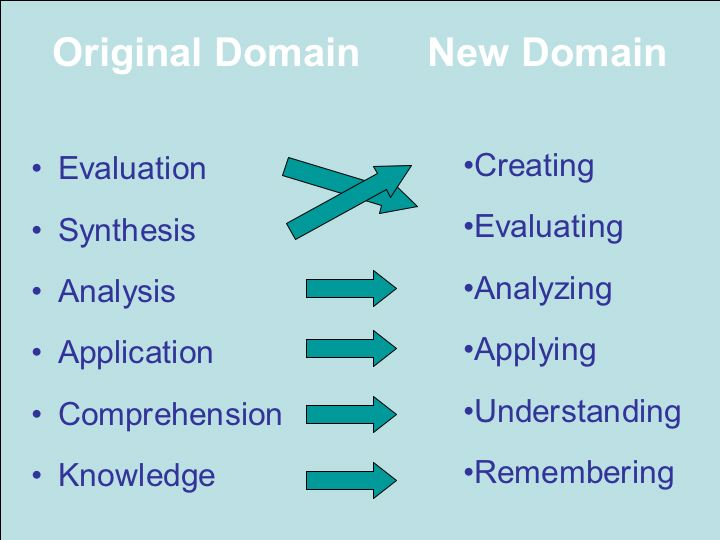Back in college, when we discussed about Bloom's Taxonomy, I was skeptical why is it that "Evaluation" is higher than the "Synthesis" level in the taxonomy. I thought that synthesizing requires a lot of thinking and creativity than just evaluating among the alternatives. I was a bit shy to ask my teacher that time because I was afraid that she can't answer my question and might sound arrogant.(To be honest, one of my weaknesses is that I'm afraid to ask questions like this because of fear that I may sound arrogant or will be mistaken as a student who "tests my teacher's competence". Until now, I have the same weakness in my graduate studies. hehehe. Perhaps this is because when I was in high school, I am very inquisitive to my teachers that I ended up being scolded and be labeled as "pilosopo" or philosophizer.) However, when I was preparing for the Licensure Examinations of Teachers, I was very grateful that one of our review lecturers at University of Iloilo presented a new Bloom's Taxonomy in cognitive domain. And to my mixed surprise and expectation , Evaluation is no longer at the top of the hierarchy.
As a sort of background, this newly revised taxonomy was published last 2001. Benjamin Bloom was already in the advanced stage of his Alzheimer's disease during the process of revision and died before the new taxonomy was published. However, David Krathwohl, one of the original contributing authors of the taxonomy (specifically on the affective domain which is the reason why the taxonomy of affective domain is commonly referred to as Krathwohl Taxonomy of Affective Domain), was one of the two editors of the new version. By the way, Lorin Anderson, one of students of Bloom, inititiated the changes.
Here is the new taxonomy of cognitive domains retrieved from this site.(If your the owner of this image, kindly inform me if you want your image to be removed). The most obvious changes that were made are changing the names from nouns to verbs and interchanging the upper two levels in the taxonomy.
For a more comprehensive explanation of the new taxonomy, this pdf file can surely help.

whoa
ReplyDelete^_^
ReplyDelete